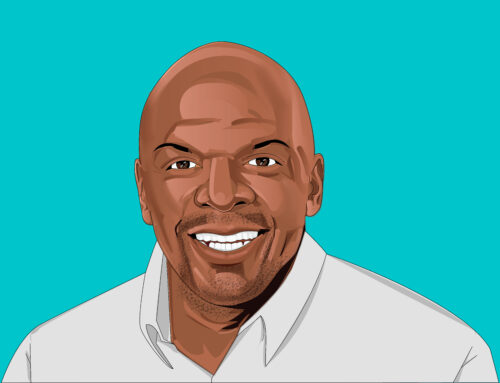Enter your information below to sign up to receive alerts on new interviews!

In this episode of Season 2 of Talent Chronicles, Ellis Briery joins us to talk his journey through Talent Acquisition the last ten years and some key insights. Ellis is an experienced Talent Acquisition professional for over 10 years moving through companies such as Rainmakers, Contrary Capital, Atrium, and even his own startup, T3 Intelligence. Ellis talks about his unique degree, lessons learned through the years, and ways to attract & engage top talent. Additionally, he gives advice for candidates going through technical interviews & more.
JCSI: Hi everyone. This is Bergin Sullivan with JCSI. I’m here today with Ellis Briery joining us for an interview in our Talent Chronicles series. Thanks so much, Ellis for being here today!
Ellis: Thanks for having me.
JCSI: So, you’ve been in Talent Acquisition for almost 10 years, with some experience starting in retail, starting your own HR firm, to computer software and internet experience as well. Could you give us a quick background of your work experiences and tell us a little bit about how you got into Talent Acquisition?
Ellis: The story begins almost 10 years ago, where I had got into Talent Acquisition the same way that everybody does, which is kind of by happenstance.
It seems like very few people start out in college thinking “I want to go into recruiting.” Once upon a time I was a professional sailor and I used to race sailboats for a living. At the end of the day after a couple of races, the skipper said, “hey, you’re fast and you’re smart, do you want a job?”
Little did I know that that was the person that was essentially the second in command of the transformation that JC Penny was going through about 10 years ago. It was going through a rebranding externally, but there was also a lot of shuffling around internally and a lot of Talent Acquisition that had to happen there.
That’s how I dropped out of college and got my first job in Talent Acquisition as a Sourcer. As a Sourcer, I was part of JC Penny’s talent transformation team that was doing a lot of the internal changes there.
Fast forward about nine months, unfortunately the board pulled the plug on that transformation, which resulted in our team getting laid off. It was too bad because I felt like we were doing some great stuff. The people that I was working with were incredibly talented and made it one of the most amazing teams I have ever been a part of. I’m still in touch with almost all of them.
From there, I very briefly worked at Riviera partners where I realized that if I was going to be working at an agency, that I wanted to own the agency. Riviera was a great place where I learned a whole lot. I really respect the heck out of that agency.
I think I was ready to take a little bit bigger step than that. I reconnected with the guy that originally offered me a job at JC Penny. We were watching the America’s Cup sailing races, out here. And basically said, “Hey, do you want to start an agency together? Here’s the kind of model that I was thinking.” And he said, “sure!” That’s how we launched T3. We ran that for about three and a half years, got up to about 12 people working there at the peak of things, completely bootstrapped. We were seeing at peak, about $70,000 a month in revenue, which was awesome. Then, we inexplicably lost all our clients simultaneously through things basically entirely out of my control.
One of our large energy drink companies realized that they were sending a bunch of money to end up filling out the role internally. They ended up creating the team that in return would cost them a lot less. one of our clients was an electric skateboard company whose skateboards started literally physically exploding, so they put on a hiring freeze. All of that happened across a little bit more than a dozen clients in literally 30 days.
I went from about $70,000 per month to about $5,000 per month and had about three and a half months of runway in front of me. I thought to myself that I can either fight hard and get a book of business built back up, or I can shut down operations and take some time off. That is ultimately what I ended up doing. I took close to a year and a half off and did some fun things that are not particularly related to recruiting. I built a movie set in LA, built an art car in Toronto, and owned a venue in San Francisco. I did that for a while until the dollars started to run out.
From there, I got back into the game at a company called Rainmakers which is a sales recruiting platform. Unfortunately, I was there briefly as I had to take a leave of absence to handle an illness in the family.
I got that stabilized and began working at Atrium, which was founded by Justin Kan. I joined there as employee number 50 and managed all the engineering product design and IT recruiting. It was an awesome experience; I really enjoyed my time there. I worked with some incredibly talented people and received mentorship from some senior executives that have been around the block a few times. It was an interesting company that had lots of VC dollars and was constantly growing. I ultimately left when I started to hear conversations along the lines of, “hey, we don’t think we are going to hit positive unit economics”. About three months after I left, there was a large round of layoffs and six months later, it had begun its final wind down.
I left Atrium to go join Triplebyte as the Head of Talent Acquisition. Triplebyte was particularly interesting to me as it is a Talent Acquisition platform. While there, I was able to build out larger scale processes and have a far-reaching impact on product across other teams. I probably would not have been able to do that if I were at any other kind of company. They gave me the opportunity to learn a lot about different things that I otherwise would probably not have visibility into. I was at Triplebyte from August of 2019 until May of 2020, where I was laid off due to plague along with a lot of other people.
I was briefly a partner in a small venture capital fund, called Contrary Capital. I think that is a talented team and they will be extremely successful. However, realistically, the KPIs that you are chasing in venture capital are on a long-time frame. For example, waiting 10 years to see if the impact you have increases the average size of liquidity is something that I did not feel was workable. At the time, I think that I was optimizing for stability while the world was quite unstable.
I had never let Triplebyte get away from me during that time. I stayed in the cat’s channel that I had created in slack. Anybody that knows me will tell you that cats are very near and dear to my heart. I made sure that I was still talking with leadership there. As things started to heat back up and the economy was starting to look a little bit more stable in tech, they contacted me. They reached out in November and said, “hey, so do you want to come back? ” I was happy to come back because it definitely felt like a place where I had left unfinished business. There was this global catastrophe that happened and turned everything off which was no fault of anything that happened internally.
It was exciting to come back, and you know, things are obviously different from where they were before. We feel a little bit more like we’re in “series a” than anything else, but it’s still an exciting time to be here. Particularly in the highly iterative way in which we’re building products and we’re shipping things. There are times that you see some insane increases that we’re able to squeeze out that are the kinds of things that you only see in very early-stage companies. But with Triplebyte over the last three months, we have been able to 3X the rate at which people are joining our platform. It came from some cool stuff that we did with one of our products called Triplebyte Screen. That kind of thing to me is simply super exciting to see. You make some product changes, you push the gas pedal, and you really see some significant output from that.
And that brings us to today.
JCSI: Awesome, sounds like an interesting journey there. Going back a little bit to starting with your education; I know you were working towards a philosophy degree. Do you think that that experience has helped you specifically with philosophy throughout your degree and then where you currently are working in Talent Acquisition?
Ellis: In some ways, I think some formal logic classes were helpful. By understanding how to make a claim, back it up with evidence, and be able to show a causal link between those two things -it’s something that’s been valuable. You know, it is an understanding how to create a compelling argument to people.
Do I necessarily recommend that anybody go out and get a philosophy degree? It is an interesting degree with an exploration about the nature of thought and the human condition as it stands. But I think it has the second lowest rate of employment rate right behind Journalism. I would say that it was valuable to spend some time doing a higher level of academia. However, philosophy is not necessarily something that I would recommend to people if they were interested in seeking out a career in Talent Acquisition. You do often see a lot of people who are Poli-Sci majors that end up in Talent Acquisition. I think there is a lot about understanding the nature of the way that people interact with each other and the science behind that which ends up being valuable in recruiting. But definitely not a lot of employed philosophy majors out there.
JCSI: I had to ask about it, I thought it was so interesting. Then, moving to when you started T3 intelligence, what lessons would you say stood out to you the most that you learned from starting a company from the ground up?
Ellis: I learned a couple of things. First is about management and being a good manager. I think I’m a significantly better manager now than I was then. But I think I did make some critical errors such as not making sure I had growth for people that are working for me in a way that’s definable and feels like is happening. Not that I feel like the people working for me at T3 didn’t have the opportunity for growth; I promoted and gave increased responsibility to a bunch of people there during the time that they were there. But I never really sat down and asked them what they were looking for. I never made that something that was very clear and quantifiable. I think that understanding how to be a little bit less risk averse is important. The mistake that probably killed the company was not hiring a salesperson that was independent of me. If I had done that, we probably would’ve seen a larger and more diverse book of business which would have meant that I had a couple of bad months instead of being forced to turn the company off.
And so, I was somewhat risk averse to hiring somebody that wasn’t going to produce billable hours or placements right off the bat. I thought that I was going to need to pay salary out which I was a bit wary of particularly because we were bootstrapped and we were profitable from the first, like two months on.
I was scared to go back to being slightly unprofitable. If I’d done that, it probably would have meant that I had a couple of months that a salesperson or account executive ramped up for. Then after that, it would have resulted in a much greater increase, but I was a little bit too scared to pull the trigger on that.
I was lacking some business fundamentals that I understand on a much deeper level now. I’d say those were the two major takeaways that I had. I had approximately one year experience working at all before I took that company off. It probably would’ve been a good idea to get a bit more experience and understand things more deeply, particularly taking a business class.
JCSI: Makes sense. How would you say the experience as CEO and co-founder working through starting the company then letting the company go; how has that contributed to your current position? Working as the Head of Talent Acquisition?
Ellis: It’s made me much more rigorous than I otherwise would have been because I realized that was something that I probably could have done better previously. For being able to be extremely data-driven and deliberate in everything that I’m doing. Instead of doing the thing that I’m pretty sure is going to work because that’s worked before, even if I couldn’t sit you down and tell you exactly why that would work or what the things that I was measuring were to determine that it was doing the thing that I wanted. Meanwhile now, I’m very laser focused on making sure that there is data-driven and the very fundamentally empirical plan that I must execute on.
JCSI: Specifically looking at the process of working with those hard-to-find roles with that talent specific to a job, such as a specific type of engineer. What do you find to work best with those niche roles? When trying to recruit them as well as hiring them and working with them?
Ellis: To begin with, I would start with creating an ecosystem of relevant companies for whatever role it is that you’re talking about. There’s a role that we are looking for now, that is particularly difficult to find which is the Head of Engineering Assessments Content. It would basically be the person that managed all the content for the technical assessments that Triplebyte has, which is a unique role. You only really see that type of role at some larger companies that have some specific assessments that they’re creating or that might have learning and development teams internally which would have assessments as part of them. But, that is going to be far away from the kind of fast paced, quickly move environment that we find ourselves in now.
It’s been important to sit down and create an ecosystem of relevant companies using tools like Crunchbase to ask if we are looking for people from boot camps? Are we looking for people from a place like the college board? Which for the ladder of the answer is no.
That’s a really important place to start as it gives you some framing for what that search is and what the kinds of places are that are going to have a similar problem space that this role is designed to handle.
From there being able to go through and x-ray those companies is important. Particularly, looking at those people, and especially initially, you’re going to have maybe a little bit of a narrow search. But as you’re looking at these profiles and you’re seeing different kinds of backgrounds; you’ll start to form more strong opinions about the kinds of searches that you can put together.
You might be able to expand out beyond that initial ecosystem if you’ve got a tight Boolean search. And you should really be doing a lot of background on the companies of the people that you’re finding beyond that. I’d say that’s probably the best tool in your toolbox to be able to do that and get those niche roles. Beyond that, being able to look at specific job boards or communities is critical. Those are the roles that might be talented security engineers who are notoriously hard to find because as security engineers you can be highly paranoid, and they cover their tracks everywhere they go. Being able to get plugged into different conferences or meetups or things like that is important. If you’re of the scale that you can do this for a more niche role, like being able to host your own tech talks, is valuable from both a sourcing perspective and an employer branding perspective. You’re creating value for the people there in the first place. You’re talking through a problem that you’ve solved. The kind of most basic formula, if you’re talking about a full-stack engineer say would be, have a PM talk about what techniques they use to create the problem statement that they did, how they came up with the acceptance criteria that they did, and what those specs look like. Then have a designer talk about how they were able to create a design that achieved these goals and how they were able to work between the PM and the engineers to make sure that what they were building is technically feasible. And then, have the engineers talk about how they built it, what the technical challenges were, that sort of thing.
That’ll look different for niche roles obviously, and that’ll depend on role to role. But you know that that kind of general framework is a pretty good one which will attract a fair amount of people. You’re producing value for the people that show up in the first place they’re able to find out interesting answers to interesting problems.
Beyond that, it gives some visibility into what that team’s operating like, how people work together, what that workflow is, and what your culture is. Then you’ve got somebody that’s starting to get to be engaged with your employer brand and that is probably a lot more inclined to want to talk to you. To throw a parallel out there, there have a lot more points as a marketing qualified lead at that point.
JCSI: In terms of those tech talks that you’re mentioning, are those ways to attract talent, or is that a way to engage the talent that you’re already kind of networking with?
Ellis: It’s both. It can be an initial point of contact for attracting talent. That is something that gives people an opportunity to get visibility into your brand to begin with. If you post on your blog, newsletters, ads, job boards, and whatever platforms you want to put that onto about what this thing is. These days that’s going to be wherever anybody that has a visa that can work for you exist.
Even beyond that, if it’s somebody that you’re already engaging with, or maybe even somebody that you’re trying to close; being able to do that and have that kind of social engagement is something that’s going to be a high touch and often very high-quality experience. It is going to help give them as much data as possible and help make the decision to come to your company.
JCSI: In terms of technical interviews, what advice could you give to the candidates going through them? Instead of looking at the employee’s perspective or the interviewer, looking at it from the interviewee perspective.
Ellis: It’s an unfortunate reality that you’re also probably being tested for the skill that is interviewing and not just for the technical skills that you’re trying to show off.
It is difficult to do, and you must be a very thoughtful recruiter. In some ways, data scientists, to try to control the difference between nerves or introversion in candidates. And so maybe you are not as engaging, or maybe you’re not talking as much about their processes; is that what’s going on? Or is it somebody that really doesn’t know what I’m talking about? That is hard to differentiate between. The flip side of that coin is you unfortunately are probably also going to be being assessed on that. It’s helpful to practice interviewing even at companies that you might not be totally interested in or use different platforms that allow you to practice. That is probably a good idea to get you into that head space of what that feels like and is going to be something really valued.
Beyond that, keep in mind that you are interviewing them as much as they are interviewing you. You should have some questions ready that are not the same ones for everybody. It should be something that will probably give you decent insight into making your own hiring decision and to figuring out does this company meet my search criteria?
It would also be helpful to sit down and write down what those search criteria are that you’re looking for during a job search. You’re probably never going to find a company that’s perfectly one-to-one with what those criteria are. But as you’re going through the process with probably multiple companies, you’re going to see which ones are kind of making it the closest to that ideal persona.
JCSI: Okay, that makes sense. Have you seen any changes between an in-person technical interview pre COVID in terms of a video or a phone versus post COVID and kind of how we’re doing things now?
Ellis: In some ways it’s harder, in some ways it’s easier.
Especially for putting together a virtual onsite, which I realized that for instance, is a bit of an oxymoron. But I have yet to find any better way to call it besides a virtual onsite. If you’re asking for a significant amount of somebody’s time such as three to five hours onsite, which I think is a reasonable amount of time. But if more than five hours, you’re going to burn somebody out on your interviewing process.
Now that it’s not in-person, breaking it up over a couple of days is much easier and it makes the logistics of this more convenient. It often tightens the timeframe in which you can get somebody onsite, or virtually onsite, rather.
There’s an adage of time kills all deals. You want to move very quickly when it comes to Talent Acquisition and being able to have that as a tool in my toolbox has been helpful. But there’s a trade from it being a little bit less personal, right?
Such as video in a box. We’ve all read the articles on zoom fatigue and all the different things that contribute to that. All those same things are still there if not doubly so for interviews, because it’s not people that you already are familiar with, but, you have probably never met before.
That’s something that you must consider, and you want to try and be as personable as possible, which is a challenge. Particularly in a totally virtual environment. I don’t have any super fantastic answers for that. I think we’re all still trying to figure out the best ways to do that.
I think just trying to be more engaging rather than less engaging is something that you must be even more cognizant of fully digitally.
JCSI: Right, that makes sense. Those are all the questions I wanted to run through with you today. Were there any final thoughts? Anything we did not cover that you’d like to share or anything else?
Ellis: The only final thoughts that I would give to anybody who is in Talent Acquisition is I feel like there’s a lot of people that don’t like us. There’s a lot of people that really do not enjoy working with recruiters. And I think a lot of that is because there’s this level of seen as being a good recruiter that is basically like you’re on top of everything. You email back everybody promptly, you have everybody in the right place that they’re supposed to be in your applicant tracking system.
To me, that is the base level of being competent at your job and being a good recruiter starts to come from being data-driven, thinking about how your process works, almost like a product manager would. Trying to figure out what those outcomes are, how to increase pasture rates in your pipeline, understanding how to do that from a real data driven perspective is super important and ultimately will lead to not only better outcomes for the company with a shorter time to hire and lower cost per hire. But also, if you’re able to measure what the kind of placements that you’re making are. If you’re asking a hiring manager and a new hire 90 days after they’ve started on a scale of 1 to 10, how good of a fit were you or even trying to have the first performance review, talk to the recruiting process and validate what it is that you’re doing.
You need to get experimental like that. You need to start trying to push that envelope in an as data-driven way as possible. If you’re going to really produce an above and beyond experience, which ultimately is going to make you a lot more successful.
JCSI: Absolutely. Well, I do appreciate you taking the time to join us today, Ellis, in our Talent Chronicle series.
Ellis: Awesome. I really appreciate you having me, and I really appreciate your time.
JCSI: Thank you.
Ellis: All right, talk to you later.
[/fusion_text][/fusion_builder_column][/fusion_builder_row][/fusion_builder_container]




